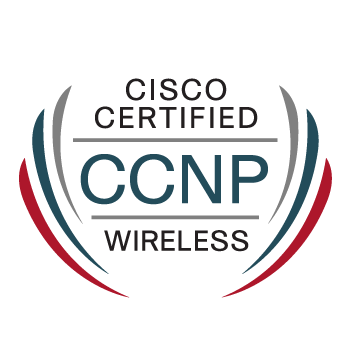- Cisco Community
- Technology and Support
- Networking
- Switching
- How to make switch work as a hub?
- Subscribe to RSS Feed
- Mark Topic as New
- Mark Topic as Read
- Float this Topic for Current User
- Bookmark
- Subscribe
- Mute
- Printer Friendly Page
How to make switch work as a hub?
- Mark as New
- Bookmark
- Subscribe
- Mute
- Subscribe to RSS Feed
- Permalink
- Report Inappropriate Content
12-18-2013 01:14 AM - edited 03-07-2019 05:08 PM
I have a L3 Switch. As per my project requirement, I want this switch to work as a hub...i.e a port copies all its data to all other ports.
We do not have hub in our premises, hence we are keen to do this.
Please help!!
- Labels:
-
Other Switching
- Mark as New
- Bookmark
- Subscribe
- Mute
- Subscribe to RSS Feed
- Permalink
- Report Inappropriate Content
12-19-2013 03:28 PM
I guess its like this
interface range fa1/0 - 24
bridge-group 1
exit
bridge 1 protocol ieee
and you will have all interfaces in bridge mode and my guess is that if this doesn't work there is not another way to do it unless you flood the cam talbe until it reaches it maximun memmory and the switch will start working as a hub.
mac-address-table aging-time 1000000 ! and start sending traffic with tons of different source mac addresses
cheers
- Mark as New
- Bookmark
- Subscribe
- Mute
- Subscribe to RSS Feed
- Permalink
- Report Inappropriate Content
12-19-2013 04:55 PM
I think adding all the interfaces to the same bridge-group would turn the switch into something hub-like, *if* you also create an individual SVI for each of the switchports.
That way, there is a separate MAC address table for each port, with no MAC addresses in them for any devices on other ports, so all traffic ends up being "broadcasted" out of each SVI onto the bridge-group, thus being received by all other SVIs and hence physical ports.
Not that I've ever tried it.
- Mark as New
- Bookmark
- Subscribe
- Mute
- Subscribe to RSS Feed
- Permalink
- Report Inappropriate Content
12-19-2013 08:47 PM
Matthew,
I do not think that the bridge-group access is a viable approach at all, because of several reasons:
- Between multiple member ports in a bridge-group, the traffic is switched, not flooded.
- Ports in different bridge-groups can not communicate at all.
- SVIs (i.e. interface Vlan) are not related to bridge-groups in general; BVIs (i.e. interface BVI) do not need to be created for a bridge-group, and even if they are, they handle Layer3 functions and do not influence the bridging
- With particular respect to Catalyst switches and bridge-groups, the SVIs are relevant because the bridge-group functionality on Catalysts can be configured only over Layer3 routed ports and SVIs. However, this feature is called Fallback Bridging, applies only to non-IP traffic, and operates based on switching, not flooding (see the first two points).
Best regards,
Peter
- Mark as New
- Bookmark
- Subscribe
- Mute
- Subscribe to RSS Feed
- Permalink
- Report Inappropriate Content
12-19-2013 03:42 PM
What do you want to achieve? I don't see a single reason why you would want to do that.
--
Don't stop after you've improved your network! Improve the world by lending money to the working poor:
http://www.kiva.org/invitedby/karsteni
- Mark as New
- Bookmark
- Subscribe
- Mute
- Subscribe to RSS Feed
- Permalink
- Report Inappropriate Content
12-19-2013 04:33 PM
Hello
I guess the best way is disable its L3 capabilities and use all its port in its default vlan 1( which by default they are assigned already)
Int vlan 1
No shut
No ip address
No ip default-gateway
No ip routing
Int ran xx0/1 -24
Switchport host
Switchport access vlan 1
No shut
Sent from Cisco Technical Support iPad App
Please rate and mark as an accepted solution if you have found any of the information provided useful.
This then could assist others on these forums to find a valuable answer and broadens the community’s global network.
Kind Regards
Paul
- Mark as New
- Bookmark
- Subscribe
- Mute
- Subscribe to RSS Feed
- Permalink
- Report Inappropriate Content
12-19-2013 06:25 PM
Hi,
Deactivating the MAC address learning in the VLAN in which you want the flooding to occur should do the trick: use the following command for the VLAN X in the global configuration mode:
no mac address-table learning vlan X
I am sure you know that degrading a switch to a hub-like operation means losing one of the major advantages of having a switch altogether.
Best regards,
Peter
- Mark as New
- Bookmark
- Subscribe
- Mute
- Subscribe to RSS Feed
- Permalink
- Report Inappropriate Content
12-20-2013 02:04 AM
Hi,
Here is a nice idea from Petr Lapukhov, it's applicable to any switch that supports RSPAN functionality
Discover and save your favorite ideas. Come back to expert answers, step-by-step guides, recent topics, and more.
New here? Get started with these tips. How to use Community New member guide


